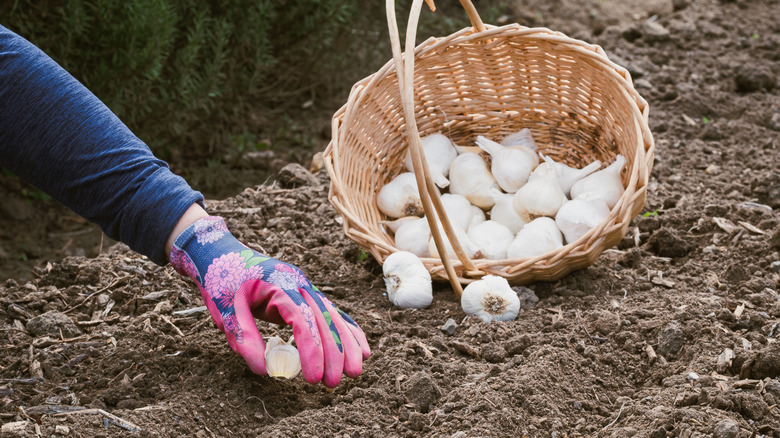The One Vegetable You Should Plant In Fall To Grow Better Peppers Next Spring
For the truly passionate gardener, it's never too early to start planning for next year's harvest of flavorful, fresh vegetables. This is just the type of motivation that should make you head back to your garden beds this fall and start growing garlic for a better pepper harvest next spring. That's right, peppers and garlic don't just taste delicious together — they also make for an excellent plant pairing. Now that you know that this allium is one of the companion plants that will thrive next to your peppers in the garden, you'll probably want to learn the science behind this winning combination and how to make the magic happen in your own beds.
Garlic is a superstar companion plant, helping numerous crops in the vegetable patch. This allium is the easy-to-grow garden vegetable that protects tomatoes, in addition to acting as an excellent garden buddy for peppers. However, since the plants in this pair do most of their growing during different seasons, you'll want to make sure to get the timing right. Start the garlic this fall and wait until late next spring to transplant peppers nearby.
Why garlic is a perfect pepper companion & how to grow it
Garlic can help gardeners produce a better pepper crop by attracting beneficial insects and deterring pests, but that's not all it does. There's something fascinating going on underfoot when you plant fall garlic ahead of its vegetable companion plant next spring. This allium plant pal changes the microbial composition of the soil and increases the soil's nutrient content. These changes improve peppers' ability to photosynthesize, leading to a better pepper crop. Growing garlic and peppers together actually improves the quality of your garden soil, increasing fertility. You can take advantage of garlic to get better eggplant yields in your garden, too.
To grow garlic in fall, separate cloves from the bulb and plant them 6 inches apart one to two weeks before your first average frost. Next, protect the garden bed with mulch for the winter. In the spring, wait until after your last average frost to transplant pepper plants several inches away from the alliums. The garlic will be ready to harvest mid-summer when the stems start to turn brown. Harvesting the bulbs will provide room for the peppers to spread and continue producing all summer long. Now that you've mastered this plant pairing, if you really want better garden vegetables next spring, don't content yourself with only growing garlic and peppers together. Avoid the companion planting mistakes everyone makes, like neglecting to incorporate flowers such as alyssum into your vegetable beds.

